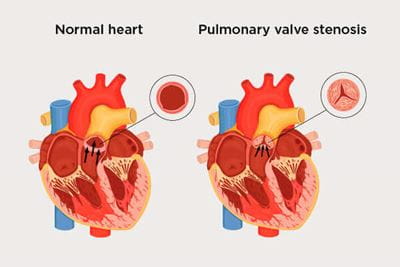 Valves are structures in the heart that prevent blood from leaking backward. They have flaps or leaflets that open and close to keep blood from leaking back into the heart.
Valves are structures in the heart that prevent blood from leaking backward. They have flaps or leaflets that open and close to keep blood from leaking back into the heart.
The pulmonary valve is between the heart's right chamber and the main pulmonary artery (MPA). It keeps blood from leaking back into the right chamber as it moves into the lungs.
What Is Pulmonary Valve Stenosis?
It's a condition where the pulmonary valve is tight, so there's less space for the blood to go through.
Pulmonary valve stenosis can occur when the flaps are very thick or don't open the whole way. This causes the heart to work harder to push blood through the valve and into the lungs.
Refer a Patient to the Interventional Cardiology Program at UPMC Children's Hospital of Pittsburgh
To refer a patient, doctors can:
How Do You Treat Pulmonary Valve Stenosis in the Heart Cath Lab?
In the Heart Catheterization Lab at UPMC Children's Hospital, we use a balloon to widen the pulmonary valve (valvuloplasty).
During this minimally invasive heart cath, your doctor will:
- Make a small incision in your groin and insert a special balloon-tipped catheter into the narrowed pulmonary valve.
- Inflate the balloon briefly, and then deflate it. The goal is to open up the valve and release the stenosis.
- Remove the balloon and catheter.
After treatment, you'll stay overnight in the hospital so we can observe you.
Sometimes the balloon technique doesn’t work, and you may need to have heart surgery later to fix the narrowing.









 Valves are structures in the heart that prevent blood from leaking backward. They have flaps or leaflets that open and close to keep blood from leaking back into the heart.
Valves are structures in the heart that prevent blood from leaking backward. They have flaps or leaflets that open and close to keep blood from leaking back into the heart.